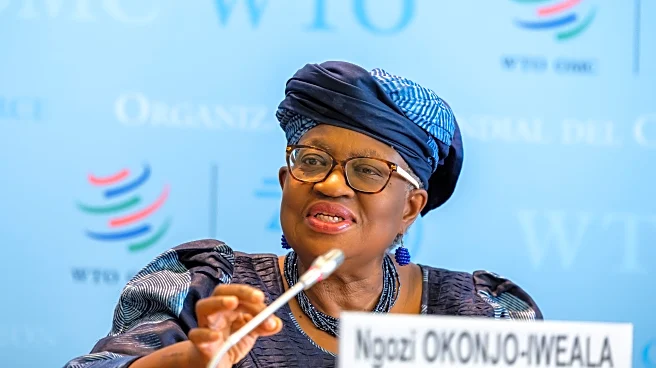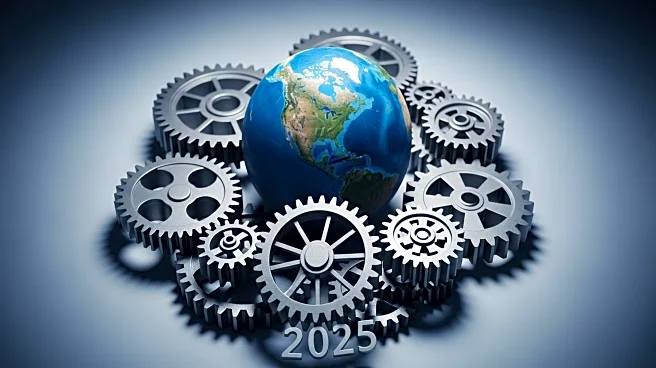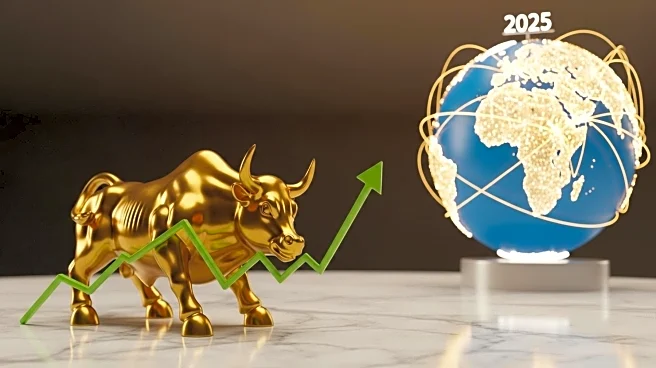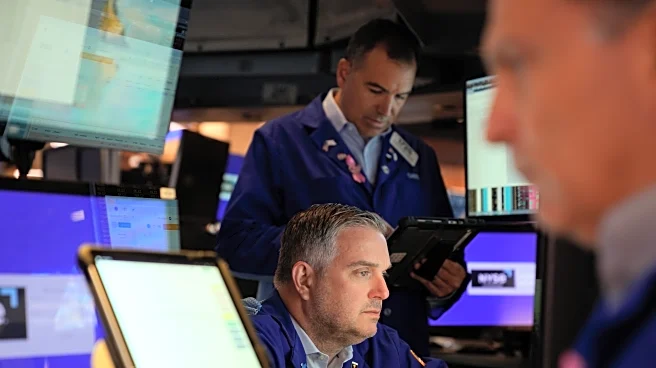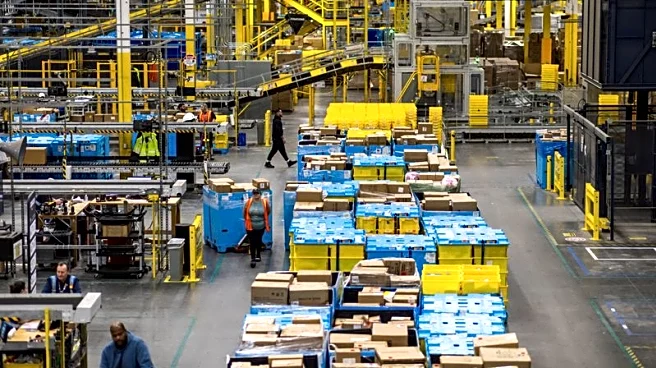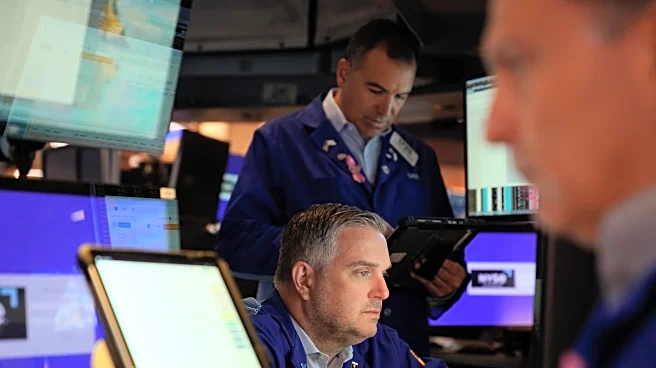What's Happening?
The Dow Jones Industrial Average (DJIA) saw an increase in its trading session on Tuesday following the World Trade Organization's (WTO) announcement of an improved global trade growth forecast for 2025. The WTO revised its growth expectations to 2.4%, up from the previous estimate of 0.9% made in April. This adjustment comes after a 4.9% growth in global trade during the first half of 2025, largely driven by emerging markets and heightened demand for artificial intelligence-related goods. Additionally, businesses have been accelerating purchases in anticipation of tariffs imposed by the Trump administration.
Why It's Important?
The upward revision of the global trade growth forecast by the WTO is significant as it reflects a more optimistic outlook for international trade, which can positively impact the U.S. economy and stock markets. The increase in demand for AI-related goods suggests a robust tech sector, which is a critical component of the U.S. economy. However, the WTO also warns of a potential slowdown in 2026, with trade growth expected to drop to 0.5%. This anticipated decline is attributed to a cooling global economy and the full impact of higher tariffs. Such fluctuations in trade growth can affect U.S. businesses, particularly those reliant on international markets, and may influence future economic policies.
What's Next?
Looking ahead, stakeholders will need to monitor the potential slowdown in trade growth projected for 2026. The anticipated decrease in trade expansion could prompt businesses and policymakers to reassess strategies to mitigate the impact of tariffs and other trade-restrictive measures. Companies may need to adapt to changing market conditions, while policymakers might consider negotiating trade agreements or adjusting tariffs to sustain economic growth. The ongoing demand for AI-related goods could continue to play a pivotal role in trade dynamics, influencing investment and innovation in the tech sector.

